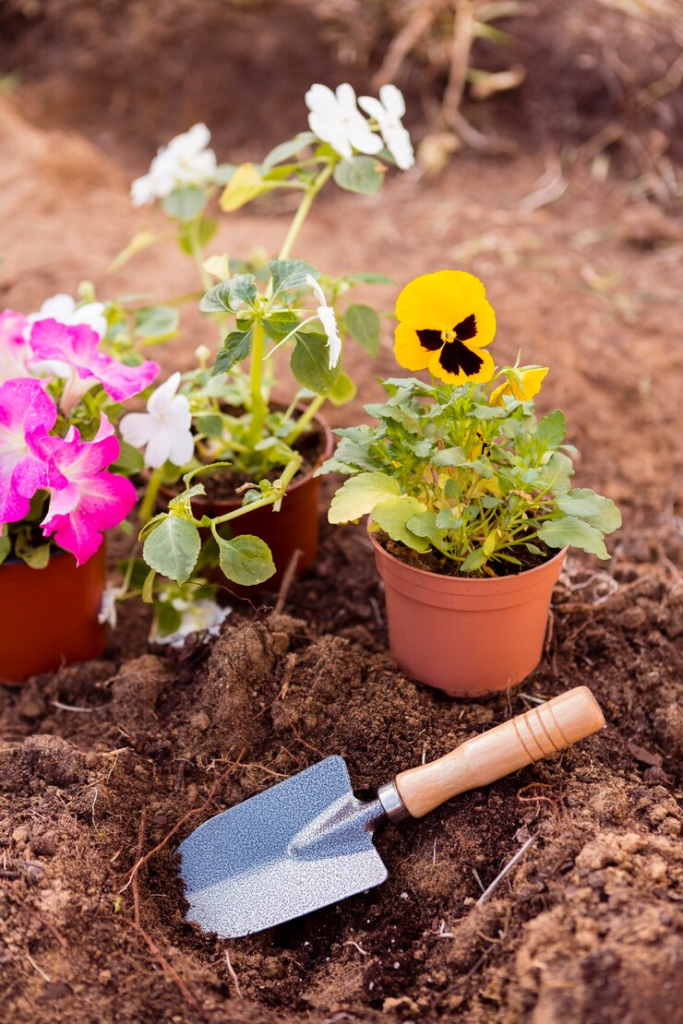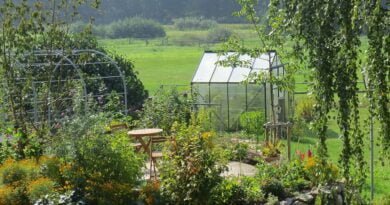Cultivating an Eco-Friendly Allotment Garden: Sustainability Tips
A nature-friendly allotment garden involves incorporating practices that promote biodiversity, conserve natural resources, and minimise harm to the environment. Here is a detailed guide on how to create a nature-friendly allotment garden:
Choose an Appropriate Site
Look for a plot of land that has good sunlight exposure and well-draining soil: Ensure the site is not prone to flooding or erosion, and avoid areas contaminated with toxic chemicals. Consider the existing trees and bushes, and think about how they will impact your garden. A site with good exposure to the sun will allow you to grow a wide range of crops, while a site with some shade will be better for delicate plants and for providing shelter for wildlife. If possible, test the soil for contaminants and nutrients to better understand its condition and what amendments might be necessary.
Plan the Layout
Draw a rough plan of how you want to arrange your plots, paths, and shared areas: Consider the slope and aspect of the site, and choose plants and garden features that will thrive in your specific conditions. For example, if you have a south-facing site, you can grow tomatoes, peppers, and other heat-loving plants, while if you have a shady site, you can grow leafy greens, herbs, and other shade-tolerant crops. Think about the flow of the garden, ensuring paths are wide enough for easy access and that plots are organised logically to maximise space and efficiency. Integrate wildlife-friendly features like ponds, hedgerows, and insect hotels to encourage biodiversity.

Choose Sustainable Materials
Use materials such as untreated wood, bamboo, or recycled materials for garden beds, paths, and fences: Avoid using materials that are treated with harmful chemicals or that have a large carbon footprint, such as concrete or asphalt. When building garden beds or other structures, consider the impact on the soil and surrounding wildlife. For example, raised beds can help to conserve soil moisture and protect soil from compaction, but they can also create barriers for small animals and insects. Using local materials not only supports the local economy but also reduces the carbon footprint associated with transporting materials long distances.
Incorporate Composting
Composting is a great way to reduce waste and provide nutrients for your plants: Set up a compost bin or pile near your plots and compost kitchen scraps, yard waste, and other organic materials. Composting not only helps to reduce the amount of waste that goes to the landfill but also enriches the soil and helps to promote healthy plant growth. There are various composting methods you can choose from, including traditional compost piles, worm composting (vermiculture), and bokashi composting. Ensure your composting system is well-managed to prevent odours and pests, and turn the compost regularly to aerate it and speed up decomposition.
Minimise Water Use
Water is a precious resource, and it’s important to use it wisely in your allotment garden: Install drought-tolerant plants, use mulch to conserve moisture, and collect rainwater to use for irrigation. Avoid watering during the hottest part of the day, when most of the water will evaporate, and water deeply but infrequently to encourage deep root growth. If you have a large garden, consider installing a drip irrigation system to conserve water and prevent waste. Mulching not only helps retain soil moisture but also suppresses weeds and improves soil health as it decomposes. Implementing a greywater system to reuse household water for irrigation can also be a sustainable practice.

Enhance Biodiversity
Promote biodiversity by planting a variety of crops and including native plants in your garden: Diverse plantings can attract beneficial insects, birds, and other wildlife that help with pest control and pollination. Avoid using chemical pesticides and herbicides, as these can harm non-target species and disrupt the ecosystem. Instead, use organic methods like companion planting, crop rotation, and natural predators to manage pests. Creating habitats such as hedgerows, wildflower borders, and ponds can provide food and shelter for a wide range of wildlife, enhancing the ecological balance of your allotment garden.
Maintain Soil Health
Healthy soil is the foundation of a productive garden: Practise crop rotation to prevent soil depletion and reduce the risk of pests and diseases. Incorporate cover crops and green manures to improve soil structure, add nutrients, and increase organic matter. Avoid over-tilling, as this can damage soil structure and disrupt beneficial organisms. Instead, use no-dig or minimum tillage methods to maintain soil health. Regularly test your soil to monitor its nutrient levels and pH, and amend it with organic matter as needed to keep it fertile and balanced.
By following these guidelines, you can create a thriving, sustainable, and nature-friendly allotment garden that supports biodiversity, conserves resources, and provides a healthy environment for plants, wildlife, and people.

Create Wildlife-Friendly Areas
Set aside a corner of your allotment for wildlife: Designating specific areas within your allotment for wildlife can significantly enhance biodiversity and support local ecosystems. Consider incorporating features such as a bird bath, a hedgehog house, or a wildflower meadow. These additions provide essential resources for wildlife, such as food, shelter, and water, and create a haven for various species.
- Bird Bath: Installing a bird bath can offer a crucial source of drinking and bathing water for birds and other small creatures. Position the bird bath in a quiet, sheltered spot to encourage frequent visits from local bird species. Regularly clean and refill the bath to maintain a healthy environment for the wildlife.
- Hedgehog House: A hedgehog house can provide a warm, dry, and safe place for hedgehogs to hibernate during the winter months. Place the house in a secluded part of the garden, surrounded by dense vegetation or near a compost heap. Ensure there is an entrance hole that is accessible for hedgehogs but too small for predators.
- Wildflower Meadow: Planting a wildflower meadow can create a vibrant habitat for a variety of insects, including bees, butterflies, and other pollinators. Wildflowers not only offer food sources but also serve as nesting and overwintering sites for many beneficial insects. This can help to reduce erosion, improve soil quality, and add a burst of colour to your allotment. Opt for native wildflower species to best support local wildlife and maintain ecological balance.
- Additional Features: Consider adding other wildlife-friendly elements such as log piles, which provide habitats for insects and small mammals, or a small pond to attract amphibians and provide a water source for a diverse range of creatures. Avoid using pesticides and other harmful chemicals in these areas to ensure a safe environment for all wildlife.
Use Organic Gardening Techniques
Organic gardening techniques help to promote healthy soil and reduce the impact of gardening on the environment: Instead of relying on synthetic fertilisers and pesticides, which can harm the environment and non-target species, opt for organic alternatives to enrich the soil and support plant health.
- Compost and Organic Materials: Use compost, well-rotted manure, and other organic materials to improve soil fertility and structure. These materials provide essential nutrients for plants and support beneficial soil microorganisms. Regularly adding organic matter helps maintain healthy soil that is rich in organic matter and capable of retaining moisture.
- Hand-Weeding and Mulching: Control weeds through manual removal and the application of mulch. Mulching not only suppresses weeds but also conserves soil moisture, regulates soil temperature, and adds organic matter to the soil as it decomposes. Use organic mulches such as straw, wood chips, or grass clippings.
- Companion Planting and Crop Rotation: Employ companion planting to enhance plant growth and deter pests. For example, planting marigolds alongside tomatoes can help repel nematodes, while basil can improve the flavour of tomatoes and repel flies. Practice crop rotation to prevent the build-up of pests and diseases that can occur when the same crop is grown in the same location year after year. Rotating crops also helps to maintain soil fertility and reduce nutrient depletion.

Share Knowledge and Resources
Allotment gardening can be a great way to connect with other gardeners and share knowledge and resources: Building a community around allotment gardening fosters a supportive network where members can exchange tips, techniques, and resources, benefiting everyone involved.
Online Forums and Social Media Groups: Create online platforms such as forums or social media groups where gardeners can ask questions, share their experiences, and offer advice. These virtual communities can extend the reach of your knowledge-sharing efforts and provide ongoing support to gardeners of all levels.
Community Gardens: Organise a community garden where members can pool resources, share tools and seeds, and assist each other with garden tasks. This collaborative approach can make gardening more accessible and enjoyable, particularly for beginners or those with limited resources.
Workshops and Gardening Clubs: Establish workshops, gardening clubs, or volunteer days to share skills and knowledge. These events can cover a wide range of topics, from composting and organic pest control to planting techniques and seasonal gardening tasks. Encouraging participation in these activities helps to disseminate valuable information and promotes sustainable gardening practices.

Having an allotment garden can be a fulfilling and rewarding experience, both for the environment and the gardener. By incorporating eco-friendly practices such as composting, using natural pest control methods, and avoiding harmful chemicals, allotment gardeners can create a sustainable and thriving ecosystem that benefits the local environment. Furthermore, allotment gardens can provide an opportunity for individuals to connect with nature, reduce stress, and improve their physical and mental health. Whether you are an experienced gardener or a beginner, an allotment garden can offer a peaceful retreat and a chance to contribute to a more sustainable future.




